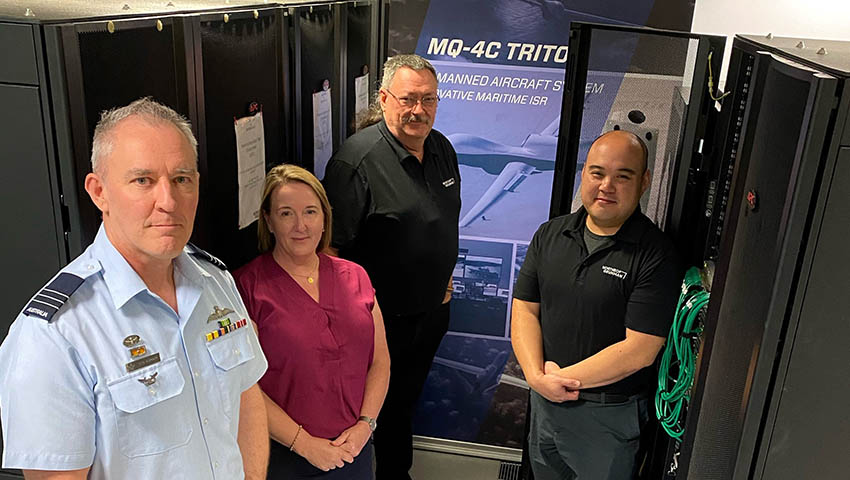Northrop Grumman has successfully completed Phase 1A – initial development of the MQ-4C Triton Network Integration Test Environment (NITE) for the Royal Australian Air Force at RAAF Base Edinburgh.
Phase 1A completion means CIOG can begin developing the Triton network design for Australia and to test basic Triton network configuration settings, Northrop Grumman Australia will develop NITE in three phases, allowing CIOG to progress from basic continuity testing between distributed environments to an advanced integrated capability development environment.
Chris Deeble, chief executive of Northrop Grumman Australia, said, "Construction of the test environment was completed in close partnership with the Chief Information Officer Group and will significantly flatten the learning curve to more efficiently integrate Triton into the joint force. Completion of Phase 1A is also an important milestone for Northrop Grumman in Australia, highlighting our ongoing commitment to supporting the Australian Defence Force with world-leading technology."
Air Commodore Leon Phillips OAM, director general at CIOG, expanded on the comments of Deeble, saying, "With Air Force embracing leading edge technology in the form of the remotely piloted MQ-4C Triton, there is now a reliance on assured data flows between the air vehicle and those who operate it on the ground and disseminate what we see."
"The NITE offers CIOG the earliest opportunity to ensure those data flows are established and verified well before our first aircraft arrives."
Australia expects to receive its first ground control station in early 2022 and its first of six to seven Triton air vehicles in 2023. Northrop Grumman initiated the build of the first Australian Triton in October.
Remotely flying out of RAAF Edinburgh, South Australia, the Tritons are capable of monitoring 40,000 square kilometres a day and seamlessly flying a round trip for sustained surveillance and in support of allied freedom of navigation operations in the South China Sea from the Northern Territory – increasing Australia’s interoperability with key allies, particularly the US.
The Triton is designed to operate in conjunction with Australia’s planned fleet of 12 manned P-8A Poseidon maritime patrol and anti-submarine aircraft.
The nation's Tritons provide a quantum leap in the nation’s surveillance and reconnaissance capabilities, while the facilities and crew required to operate, train and maintain will be part of the initial $1.4 billion investment, which includes $364 million on new facilities at RAAF Bases Edinburgh and Tindal (in NT).
"The first of the Triton aircraft is expected to be introduced into service in mid-2023, with all six aircraft to be delivered and in operation by late 2025, based at RAAF Edinburgh, South Australia," then prime minister Malcolm Turnbull said at the announcement of the $1.4 billion acquisition.








